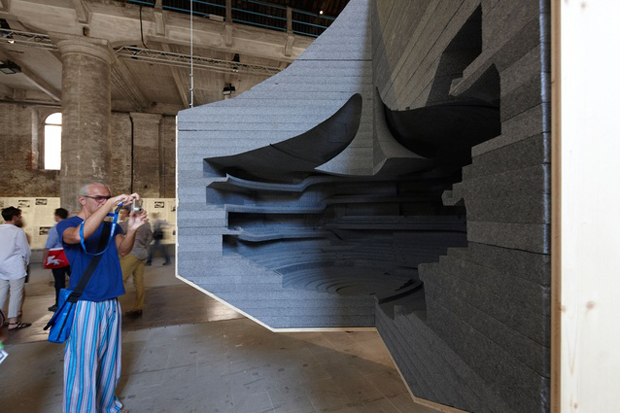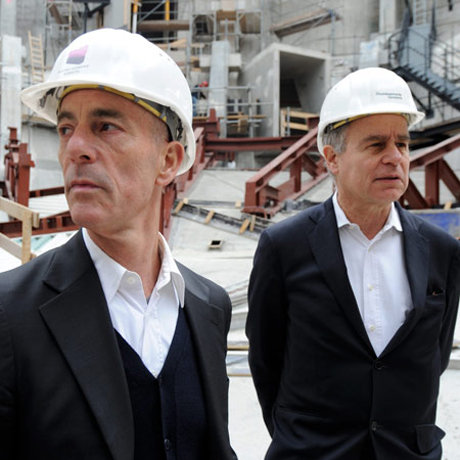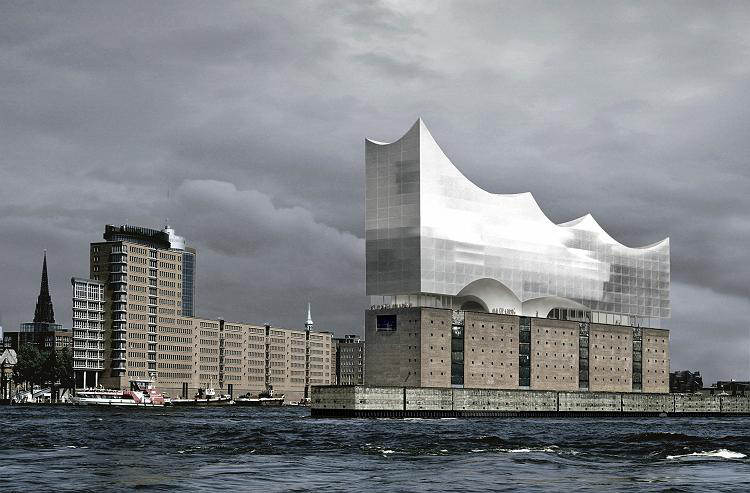
Herzog & de Meuron make mini protest in Venice
Foam interiors of unbuilt Hamburg Elbphilharmonie building are surrounded by uncensored newspaper articles
Architects Herzog & de Meuron are using representations of the interiors of their unfinished Elbphilharmonie concert hall in Hamburg in a discrete, mini-protest against the delays and escalating costs that caused work on it to be suspended last November.
The architects say they chose to present the work, "The construction site as a common ground of diverging interests" at the Biennale to draw attention to the issues surrounding the project and their wider effect on the architectural industry in general. Carefully chosen newspaper articles about the project line the walls around the foam models of the Elbphilharmonie.
In their notes for the installation Jacques Herzog and Pierre de Meuron write: "The history of the Elbphilharmonie is an almost incredible example of a bottom-up democratic project, informed with euphoric energy, driven by architectural beauty, cultural-political vision, and civic pride. This energy exhausted itself in the face of exploding building costs and seemingly endless prolonged construction, culminating in a temporary building stop in November 2011.
"The large-scale construction site increasingly mutated into a battlefield involving the three main players: the client (the City of Hamburg, and its representative ReGe), the general contractor, and the architect/general planner. Ideally, the construction site of every building project is a platform of interaction that engages these three main forces; in this case, it relentlessly exposed conflicting interests and requirements. The story of the Elbphilharmonie provides, as an example, an insight into the extremes that mark the reality of planning and building today.

Herzog & de Meuron say that the installation for the Biennale presents the project "without taking a stand or attempting to analyse the complexities of its evolution. The only comments provided are uncensored press reports, demonstrating that this project has been a focus of public interest and ongoing debate for years. The installation includes representations of the complex building services; camera shots walking through the construction site; and large-scale models, whose spatial and physical presence represent what the architects wished and still wish to foreground: architecture."
Now scheduled for completion in 2014, the Elbphilharmonie will feature three concert halls and a glass structure atop the roof of an existing Hamburg warehouse. For more examples of cutting edge architecture - some of which came to fruition smoothly, some of which did not, check out our new book 20th Century World Architecture. And take a look at more Herzog & de Meuron content.
